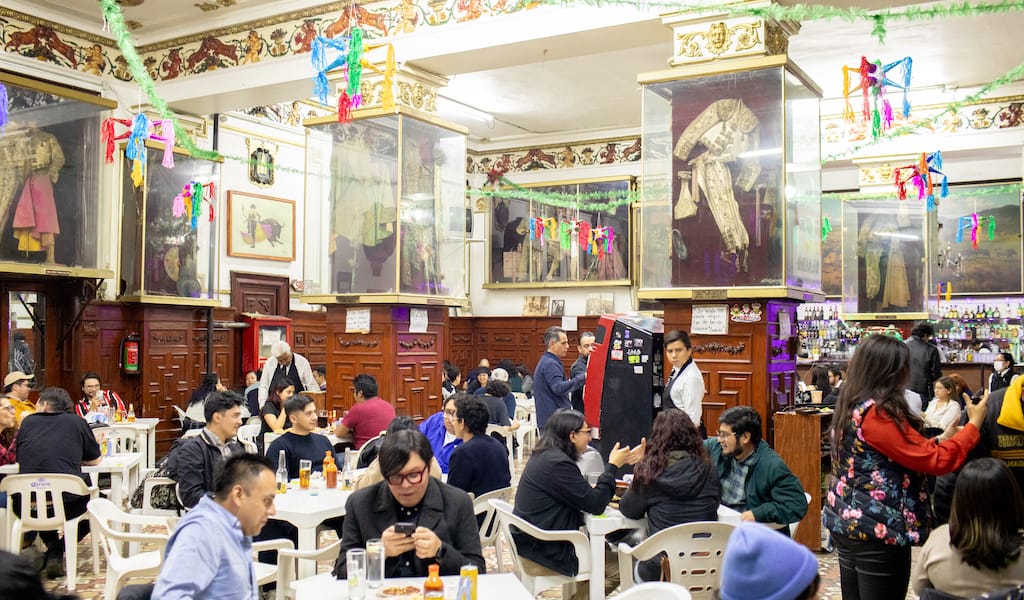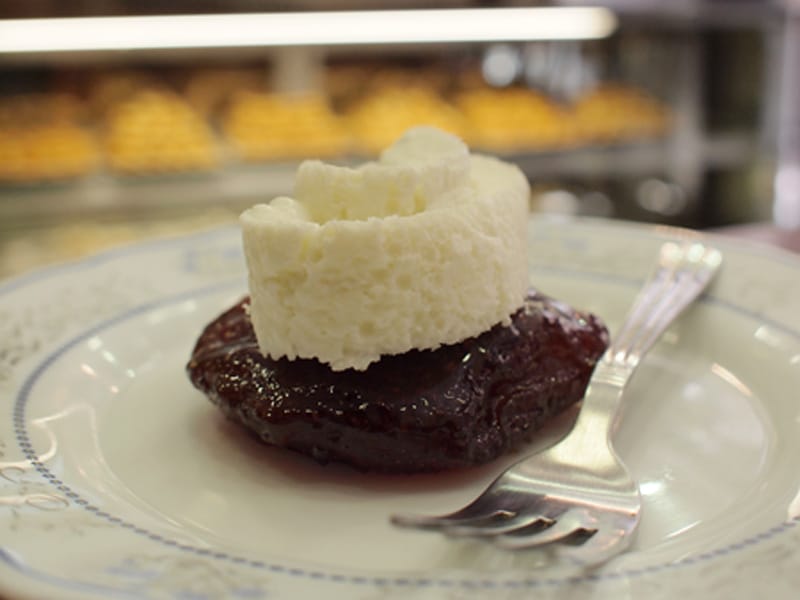From the point in 2002 when multibillionaire Carlos Slim inked a deal with Mexico City to revitalize its historic center until now, there have been layers of change. Streets were made pedestrian-only after months of work by bulldozers and jackhammers. Broken windows and abandoned buildings have been replaced with countless new shop fronts offering shiny opportunities.
Despite the strictures of tough legal bulwarks against eviction, a wave of economic change has swept the city’s center, spray-brushing away signs of endemic poverty in ironic lockstep with scheduled protests by social-justice movements ranked by those who casually grab a bite after the march. Crowds are swelling along the planned corridors.

We find ourselves as foreigners becoming less foreign over the years but perhaps more estranged, and one must wonder how some of our more beloved establishments survive at all. The situation deserves a step backward – a reassessment of where we have come.

Sometimes we benefit from a familiar face, a familiar jukebox or just some soup and freebie enchiladas and cold beer.
The entrance to La Faena on Venustiano Carranza, downtown just a couple dozen meters from Bolívar, mixes well with the Spanish- and French-inspired avenues of the Centro Histórico. Its dimly lit entrance with flickering phosphorescent lights deters less intrepid visitors. Dingy but warm, La Faena is a conversation-starting getaway from the tourists and noise and a place for a decent bite to eat before heading out again.
There are varying histories surrounding the restaurant. The building itself was once the Palacio del Marqués de Selva Nevada (“Palace of the Marquis of the Snowy Forest”), completed in 1753. It has since undergone a number of transitions, becoming for a while the Hotel Mancera in the late 19th and early 20th centuries. In the 1930s, the hotel bars became hangouts for anti-Franco forces escaping the Spanish Civil War under then-President Lázaro Cárdenas’s outspoken policy welcoming refugees from that conflict, which was eventually lost to fascist forces. Eventually, the hotel shut down and the two remaining bars became entities unto themselves: the posh Hotel Mancera, a Centro staple, and the less known but more underground-friendly cantina La Faena, which opened as such in 1959.

There are still many cantinas scattered across the Centro that have signs over the doors or to the side expressly saying that women are not allowed. But these signs are now ignored and serve more as signposts to times gone by. Coincidentally, La Faena is not one of these, given the time it opened. When this gatekeeper policy changed in the 20th century, it was a major advance in women’s liberation, enabling women to be able to come in with male friends or other women and sit down to order a drink.
In 1959, Spanish bullfighting culture was all the rage, as was socialism. Sitting between smoke-glazed walls on plastic chairs in La Faena’s current incarnation, we imagine macho bullfighters coming together, surrounded by paintings and life-size tableaus depicting toreadors (some of whom are set in oddly homoerotic poses) in the early 1960s, when the world was about to change.

Still waiting tables after 56 years, Don Juan Ponce Sánchez told us the bullfighters’ union once resided just around the corner. From there, friends, get-togethers and word of mouth kept the place going as it elevated itself to cult status.
Sit down for a drink – draft beer runs 35 pesos (about US$2.50) for a bola (double beer in a round glass). Order one, and with patience come freebie quesadillas with shredded white cheese and tomatillo green sauce. Or ask for seasoned peanuts or deep-fried, gluten-based (yes, gluten) “pigskin” chips.

There is a heavy dedication to chicken and beef fare, but go with the seafood options, such as the “Vuelva a la Vida” (130 pesos or US$7.60) – literally, “back to life” – a Mexican hangover cure based on squid, shrimp, ketchup and spices. There’s also squid ceviche or just a straight-up Veracruz-style fish fillet, with its eyes on display.
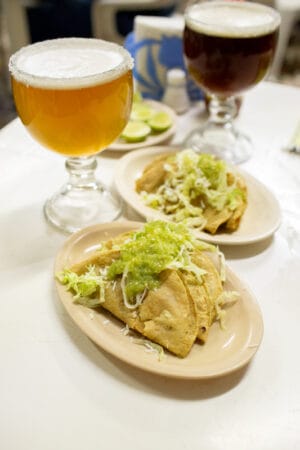
While there are other options, we’re happy with soup; lately, we’ve been enjoying the sopa Azteca. “Aztec soup” is the Mexican equivalent to American apple pie in cultural trade, with uncountable restaurants hawking their own versions. Called tortilla soup stateside, it consists of a basic chili- and oil-infused broth. The distinctions often lie in whether everything is added kitchen-side or whether the diners are given side bowls with the garnishes to make their own – our personal preference and one La Faena supports. The soup often contains chicken, which is always cooked into the soup, as are usually, but not always, strips of pre-crisped corn tortilla strips or blocks. However, there are alterations of cooked-in or crushed-and-added guajillo chili, pea-sized cubes of queso blanco and all manner of avocado cuts and cubes (the latter, in La Faena’s case), whisked in some combination of the diner’s choosing with a plain-old spoon.
Not into it, or feeling a cold coming on? Try the oh-so-tasty sopa de ajo con huevo (garlic and egg soup). It will make your heart warm and your loved one request that you sleep on the couch tonight – the perfect foil.
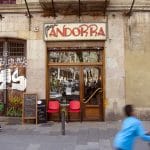 May 6, 2013 Andorra
May 6, 2013 Andorra
As a child, Manel Palou spent hours playing in the kitchen of Andorra, his parents’ […] Posted in Barcelona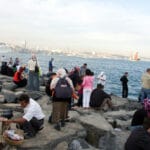 November 28, 2015 A (Shady) Place in the Sun:
November 28, 2015 A (Shady) Place in the Sun:
Summer months in Istanbul can be oppressively hot. In a city that seems more prone to […] Posted in Istanbul October 29, 2012 Sakarya Tatlıcısı
October 29, 2012 Sakarya Tatlıcısı
The arrival of fall always finds us heading instinctively, like salmon swimming towards […] Posted in Istanbul
Published on December 30, 2015
Related stories
May 6, 2013
Barcelona | By Johanna Bailey
BarcelonaAs a child, Manel Palou spent hours playing in the kitchen of Andorra, his parents’ restaurant in Barcelona’s Barrio El Born. Later, as a teenager, he helped out behind the counter while his brother Miki cooked in the kitchen. Originally bought by his grandfather in 1952, the small restaurant had been around for as long…
November 28, 2015
IstanbulSummer months in Istanbul can be oppressively hot. In a city that seems more prone to laying asphalt than planting trees, a public place in the shade is hard to find. Though many Istanbulites escape to the green spaces outside of the city on weekends, we’ve compiled a few inner-city options for the urban picnicker…
October 29, 2012
IstanbulThe arrival of fall always finds us heading instinctively, like salmon swimming towards their ancestral headwaters, to the Balık Pazarı, Beyoğlu’s historic fish market. Autumn is quince season in Turkey and that means the appearance – for a limited time only – of one of our favorite desserts, ayva tatlısı (literally meaning “quince dessert,” although…







































